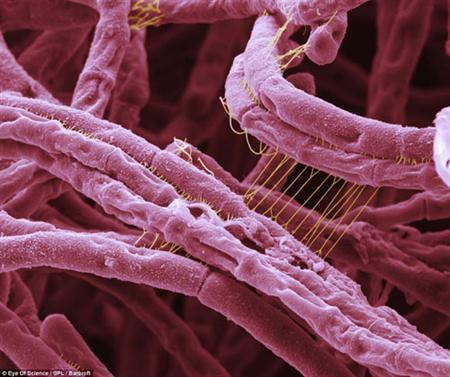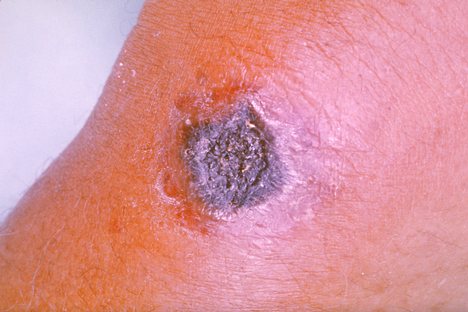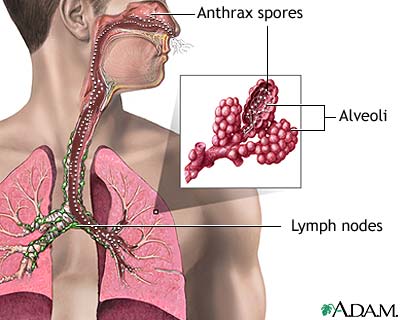Anthrax

Etiology/Bacteriology
Taxonomy
Domain: Bacteria
Phylum: Firmicutes
Class: Bacilli
Order: Bacillales
Family: Bacillaceae
Genus: Bacillus
Species: anthracis
Description
Bacillus anthracis is a Gram-positive facultative aerobic spore-forming bacterium found in the soil. B. anthracis derived its name from the Greek word for coal because this pathogen can cause black lesions on the victim's skin. The bacterium is non-motile and non-hemolytic on blood agar. B. anthracis is found mostly in spore-form in the environment, but when it has infected a host it will germinate and replicate in essentially all body tissues. When anthracis is in the spore form, it is resistant to most adverse environments and can survive for many decades.
Pathogenesis
Transmission
The most common way a human can contract anthrax is being in contact with an infected animal. Herbivore grazing animals can commonly contract anthrax because anthracis lives in the soil. A person may get anthrax by inhaling the spores from animal products, such as wool, have an open abrasion on the skin be exposed to the spores, or eating undercooked meat from an animal that was infected. More than 90% of anthrax cases are the cutaneous exposures.
Infectious dose, incubation, and colonization
The infectious dose of B. anthracis is not entirely clear. Some suggest 100 spores will cause infection while some analysis have shown as few as 1-3 spores will cause infection.
Epidemiology
Virulence factors
Clinical features
Cutaneous

Inhalation

Gastrointestinal
Diagnosis
Treatment
Prevention
Host Immune Response
References
1. Conway, Tyrrell. “Genus conway”. “Microbe Wiki” 2013. Volume 1. p. 1-2.
2. http://www.ncbi.nlm.nih.gov/pmc/articles/PMC1769905/
3. http://www.ncbi.nlm.nih.gov/pmc/articles/PMC2784286/
